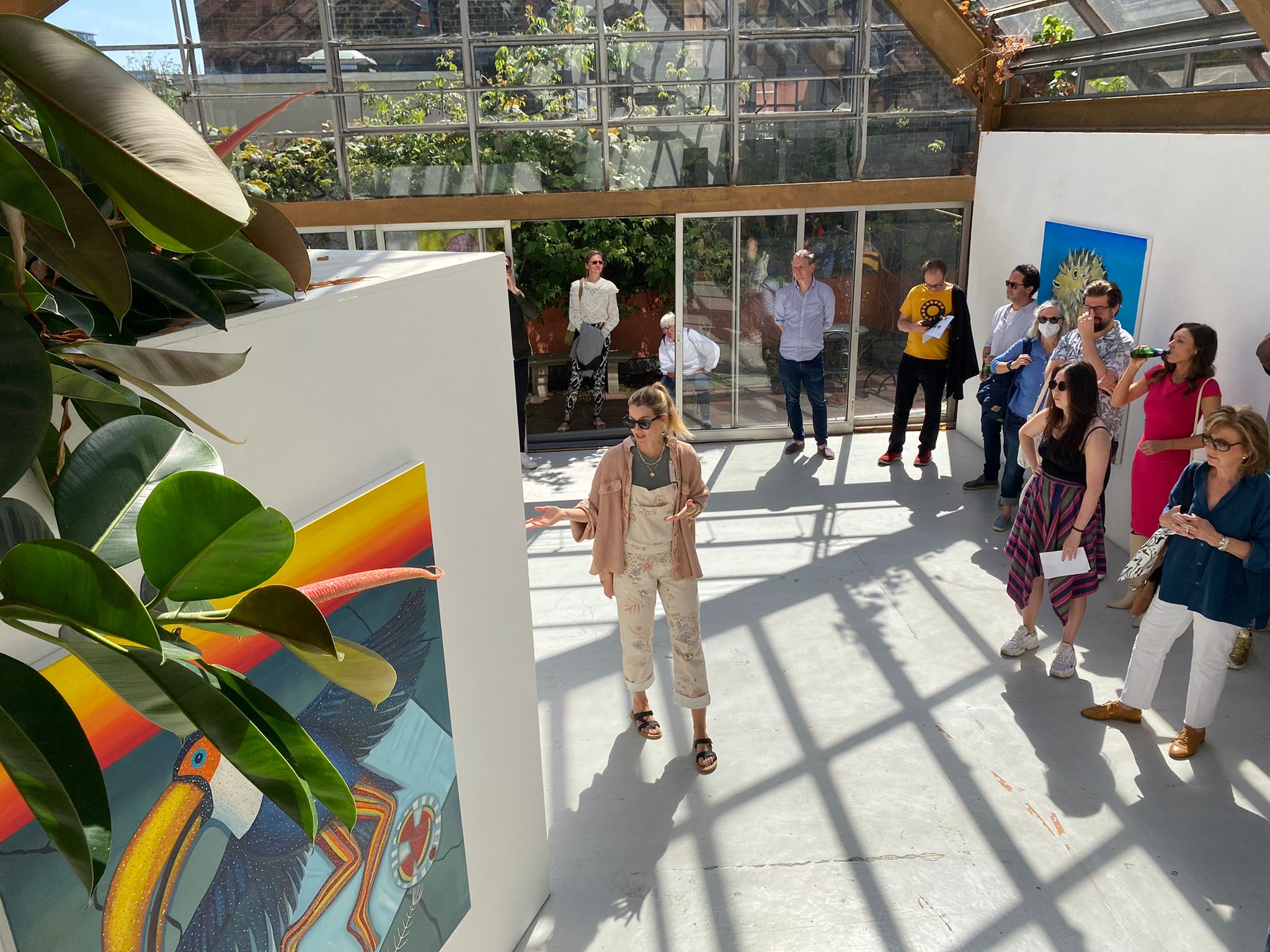
The second edition of London Gallery Weekend (LGW) closed on Sunday, leaving dealers optimistic that the event has injected at least some momentum into London’s usually quiet summer.
This year, more than 150 galleries took part in the proceedings spread across three days and London’s vast geography, providing an interesting test case for the viability of the gallery-weekend format as a vehicle for sales in post-lockdown London.
If Friday the 13th (with Mercury in retrograde, no less) seemed an inauspicious date to begin, it’s because the weekend’s original dates (the first weekend of June) were thrown off by celebrations marking the Queen’s Jubilee.
Unlike last year, London Gallery Weekend was thus no longer a jumping-off point for the European art season, with collectors headed to Art Basel straight after. Attendance may have been hampered; although official figures are still pending, it certainly felt significantly quieter than last year’s event, when 40,000 visitors attended.
Installation view Tim Garwood, “Horatiu Boldor,” courtesy Sim Smith.
Is London Thriving?
It’s an interesting moment to look at London’s market landscape, amid talk of the air being let out of the city’s auction market in favor of consignments to New York and Hong Kong. In 2021, post-Brexit and post-lockdown, the U.K. generated just under $2 billion in auction sales, a 38 percent increase from 2020, but a nearly 11 percent decline from 2019, according to Artnet News Pro’s spring 2022 Intelligence Report.
Still, auction house execs preach optimism. Sebastian Fahey, Sotheby’s managing director for Europe, the Middle East, and Africa, sees “undeniable promise” in the London market, boasting that Sotheby’s sales in the city so far this year “are at their highest year to date levels since 2018, up 55 percent on 2021.” (A lot of that had to do with a record-breaking Magritte.)
Dealers participating in LGW expressed similar optimism in the primary sector, even after Brexit. “Though post-Brexit there are certain logistical challenges, the sales aren’t affected,” Thaddaeus Ropac told Artnet News. London, dealers say, is still resilient, giving them reasons to double down. Attesting to Hauser & Wirth’s confidence in London’s position, it plans to double its footprint when it opens a new flagship in 2024.
“London has arguably one of the most diverse and radical international contemporary gallery landscapes in the world, so ultimately collectors will always be drawn here,” Jeremy Epstein, the founder of London Gallery Weekend and a director at Edel Assanti gallery, told Artnet News. He pointed to one concrete indicator: 14 galleries participating in the weekend in 2022 opened during the past two years.
The lifting of pandemic restrictions also allowed for public programs, including a riveting highlight performance Mandy El Sayegh reflecting on bodies in confinement. What’s more, it allowed international visitors to stop by and participate in a “Friends of London Gallery Weekend” event including studio visits, exhibition tours, and entrance to a few parties. LGW also partnered with the Art Fund charity to bring 20 regional museum curators to London for two days.
Mandy El-Sayegh performance The Minimum. Photo by Will Amlot.
Slower Paced Sales
Sales reports, however, were mixed. On the positive end of things, Addis Fine Art reported selling works by Nigatu Tsehay (from his solo at the gallery), Tizta Berhanu, and Tadesse Mesfin ranging from £13,000 to £46,000, adding that some conversations with collectors began at the Eye of the Collector fair the week prior. Elsewhere, Edel Assanti said it placed a Lonnie Holley sculpture with a London collector.
Meanwhile, William Annesley, a director at Pippy Houldsworth, said his gallery was now in talks with patrons groups from Chisenhale, Tate, and the Contemporary Arts Society; and Kristin Hjellegjerde reported a full house for her gallery’s talk and walk-through with Richard Stone, Celina Teague, with Daniel Barnes, calling the event “another Frieze week for the city.”
“LGW ‘22—similar to this year’s Eurovision—provided a well-needed burst of energy to the U.K. gallery scene,” Goodman Gallery director Jo Stella-Sawicka told Artnet News.
Yet many other dealers I spoke with declined, uncharacteristically, to discuss sales, suggesting it was a sensitive subject. And there did seem to be a smaller audience than last year: Fred Henderson, director of Celia Brunson Projects, reported “slightly less traffic” than last year, but said he still had new relationships to show for the event with visitors from San Francisco and Tokyo.
New work by Larry Bell at Hauser & Wirth. Courtesy of London Gallery Weekend. Photo by Will Amlot.
Not a Replacement for Art Fairs
But there remains a glaring problem. “Given the scale and dynamism of London’s gallery community, the collecting public is not proportionally large,” Epstein said. Last year, when LGW took place during lockdown, buying excitement was likely amplified by a literally captive audience.
But now, the hamster wheel has been oiled and collectors are looking down the barrel of a crush of premier art fairs in June, making some, perhaps, less willing to commit so early in the year.
While LGW’s debut last year prompted talk of the format as a viable alternative to the art fair, the takeaway this far is that, as much as there is to complain about art fairs (there are too many, are too expensive, and are all bad for the environment), they’re engineered for commerce, and their compressed format and manufactured sense of urgency are conducive to sales. When it comes to market utility, it’s clearly not time to hang up the art-fair lanyard yet.